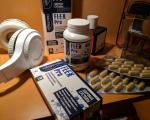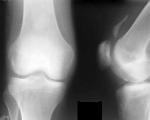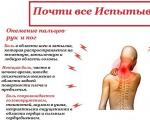Why does the Achilles tendon hurt and how to treat it at home
Man is the only animal from the Mammals class that has the ability to walk while maintaining the vertical axis of the body. This feature has been shaped by modifications and genetic changes over a long period of human evolution. As a result, the lower limb and spinal column were formed to provide walking, standing, running, sitting and other movements, while maintaining the vertical position of the torso. To a greater extent, the lower spine takes on the axial load, but the important role of the structure and function of the lower limb should not be discounted.
A significant role in the formation of human posture is played by the correct shape of the foot and the strength of the calf muscles. These two anatomical structures are closely related. In violation of the shape of the foot (flat feet), the load on the knee joint changes, which causes its disease. With a deforming disorder of the knee joint, the function of the spine also suffers.
To ensure the health of the entire musculoskeletal and ligamentous apparatus of the human body, it is necessary, first of all, to take care of your foot. The main role in the development of an anatomically and physiologically correct foot is played by the Achilles ligament.
Pain in the Achilles tendon brings a person not only inconvenience in moving, but also gradually leads to the formation of diseases that affect the entire human skeleton.
Symptoms of Achilles Ligament Disease
The Achilles ligament is located in the heel area. This is the strongest tendon in the human body, which provides attachment of the calf muscle to the calcaneus, and makes it possible for the ankle joint to move, and, therefore, maintain an upright standing, walking and running.
Achilles can get sick in a variety of situations. But the method of treating this organ is quite monotonous and has general trends and principles. It is worth noting that every doctor who encounters inflammation and pain in the Achilles tendon prescribes the necessary treatment, which is aimed at the speedy restoration of the function and condition of the Achilles. The task of the patient is to fulfill all the conditions and appointments of the doctor, which will ensure the desired result.
When contacting a specialist, who is a traumatologist, orthopedic traumatologist or orthopedic surgeon, the appearance of the lower leg is first of all assessed and the patient's complaints are listened to. It is important to note that often the patient himself tells how he got injured, which is important for making a preliminary diagnosis.
Complaints of the patient with an injury to the Achilles tendon:
- Pain symptom (pain when walking, moving the foot, resting on the leg, walking in heels).
- Creaking sound when moving foot.
- A crunch or crackle on the back of the lower leg when the leg is extended (Achilles can also crunch when walking).
- Tendon thickening and decreased mobility of the foot.
- The formation of a lump in the ligament area.
- Stiffness of walking in the morning due to discomfort in the foot.
Of course, the most important complaint that makes a person see a doctor is pain. It is she who is the first sign of damage to the ligament and the reason to treat it. Depending on the nature of the pain, the cause of the condition can be assumed. For example, with pain accompanied by crunching or cracking of the tendon that appears when walking in heels, it is necessary to talk about the weakness of the calf muscle and not pronounced tuberosity of the calcaneus, in the place where the Achilles is attached.
This unevenness develops during the constant load that the bone surface receives when walking. This condition can be treated by stretching the posterior surface of the lower leg and gradually increasing the load on the calf muscle.
Causes of Achilles Tendon Pain
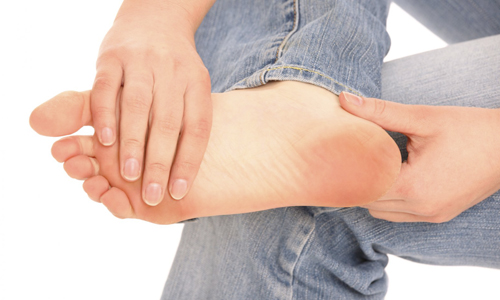
In order to figure out why the Achilles tendon hurts and find reliable reasons for this condition, you need to do a series of functional tests that will show the site of inflammation. By clarifying the mechanism of injury with the patient, it is possible to determine the degree of damage and suggest treatment tactics. The final treatment option in traumatology is possible only after X-ray examination, tomography of the place that hurts or ultrasound.
The most common causes of inflammation in Achilles:
- Stretching.
- Partial and complete rupture of the integrity of the tendon.
- Tendon injury (bump, bruise, swelling).
- Mechanical injury of the tendon (cut, puncture, tear by a foreign object).
- Infection of the tendon in trauma (after a cut).
- Dislocation of the ankle joint.
Achilles on the leg hurts most often with injuries that are domestic or sports.
Orthopedist Anatoly Shcherbin:
"It is known that for the treatment of bones on the legs there are special insoles, correctors and operations that are prescribed by doctors. But we will not talk about them, and those medicines and ointments that it is useless to use at home. Everything is much simpler ..."
Household injuries occur as a result of an extreme load on an organ that is not prepared for this. And domestic injuries occur when labor safety rules are not observed, falls, wearing inappropriate shoes.
Diagnosis of pain in the Achilles tendon
First of all, before treating an injury, it is necessary to diagnose the nature of the damage to the ligament. For this, instrumental research methods are used.
Data from common instrumental diagnostic methods for pain in Achilles
| Nature of injury | ultrasound | x-ray |
| Ligament bruise | There are no signs of damage to the integrity of the tendon. There is no accumulation of fluid in the region of the ligament and muscle. There are no intramuscular hematomas. There is diffuse tissue edema. Signs of inflammation and dysfunction. |
There are no signs of violation of the integrity of bones and joints. |
| Dislocation of the ankle joint | There are no hemorrhages and signs of violation of the integrity of the bone structure. There is a violation of the ratio of articular surfaces that are not in an anatomical position. | The articular surfaces of the joint are not in the correct anatomical position. Bone structures are not broken. |
| Achilles tendon rupture | Signs of partial or complete violation of the integrity of the tendon. With a complete rupture, there is a violation of the anatomical position of the gastrocnemius muscle, there are internal hematomas and free fluid | Signs of violation of the integrity of bone structures with or without violation of the anatomical location of the articular surfaces. There is always a violation of the location of the muscles of the lower leg. |
Diagnosis of injuries of the Achilles tendon is based not only on the data of instrumental research.
Questioning and examination of the patient also play an important role. Instrumental diagnostics is carried out in order to confirm the preliminary diagnosis.
Medical treatment for Achilles tendon pain
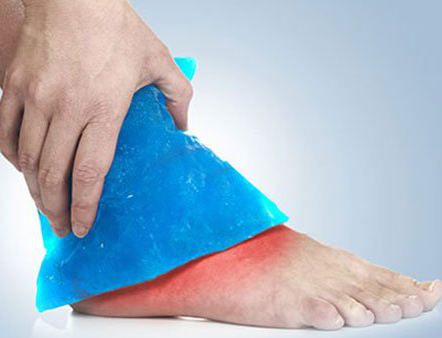
Algorithm of action in case of damage to Achilles in any situation:
- Apply cold.
- Call an ambulance if it is clear in appearance that a consultation will be needed.
- Immobilize the limb and ensure its rest (take a position in which it hurts the least in the leg).
- Take an anesthetic (ketorolac 1-2 tablets or diclofenac IM. The child is prescribed ibuprofen).
- If there is an open wound, treat it with alcohol, apply a clean bandage.
Timely and correctly rendered assistance can play a major role in the prognosis of the recovery of the victim. It is better to do nothing than to do something wrong and hurt the person even more.
Doing self-reduction of fractures at home, smearing the limb with various medicines, using traditional methods of medicine, as well as using a variety of techniques to correct the shape and integrity of the limb is strictly prohibited.
Treatment of the Achilles tendon depends on the degree of pain symptom and the severity of the inflammatory process.
| Acute trauma to the Achilles without visible pronounced damage while maintaining the integrity of the skin | Rest, the first three days of periodic application of cold. Locally: a lotion of drugs: hydrocortisone, analgin, dimexide. Medicines mix ½ with water. Apply the first three days. Anti-inflammatory ointment without a warming effect. IM: baralgetas 5 ml for 3 days. After 72 hours after the injury, a warm dry compress can be used. |
| Acute trauma with damage to the integrity of the skin and partial violation of the integrity of the skin. | Complete immobilization of the limb. Inside: Ibuprofen IM: Baralgetas 5 ml for 3 days. Place (on intact skin) is the same. Spread green on damaged skin to dry. You can anoint wounds with an antifungal agent to prevent secondary infection. Local administration of anti-inflammatory drugs: Diclofenac 1 ml, Hydrocortisone 1 ml. |
| With violation of the integrity of the bone and ligament. | Operation. Plaster cast (plaster removal is possible only after the full restoration of the tendon function). Inside antibiotics (Ceftriaxone). Botulism vaccination (if indicated). Inside and in / m the same. |
| With chronic injury (one year old or more). | Do a course of local treatment once a month (5-6 times a day). Physiotherapy course 1 time per year, san-kur treatment. Gymnastics daily. |
With scattered, not intense pain, you can treat the Achilles tendon at home. Although to be sure, it is better to consult a specialist.

